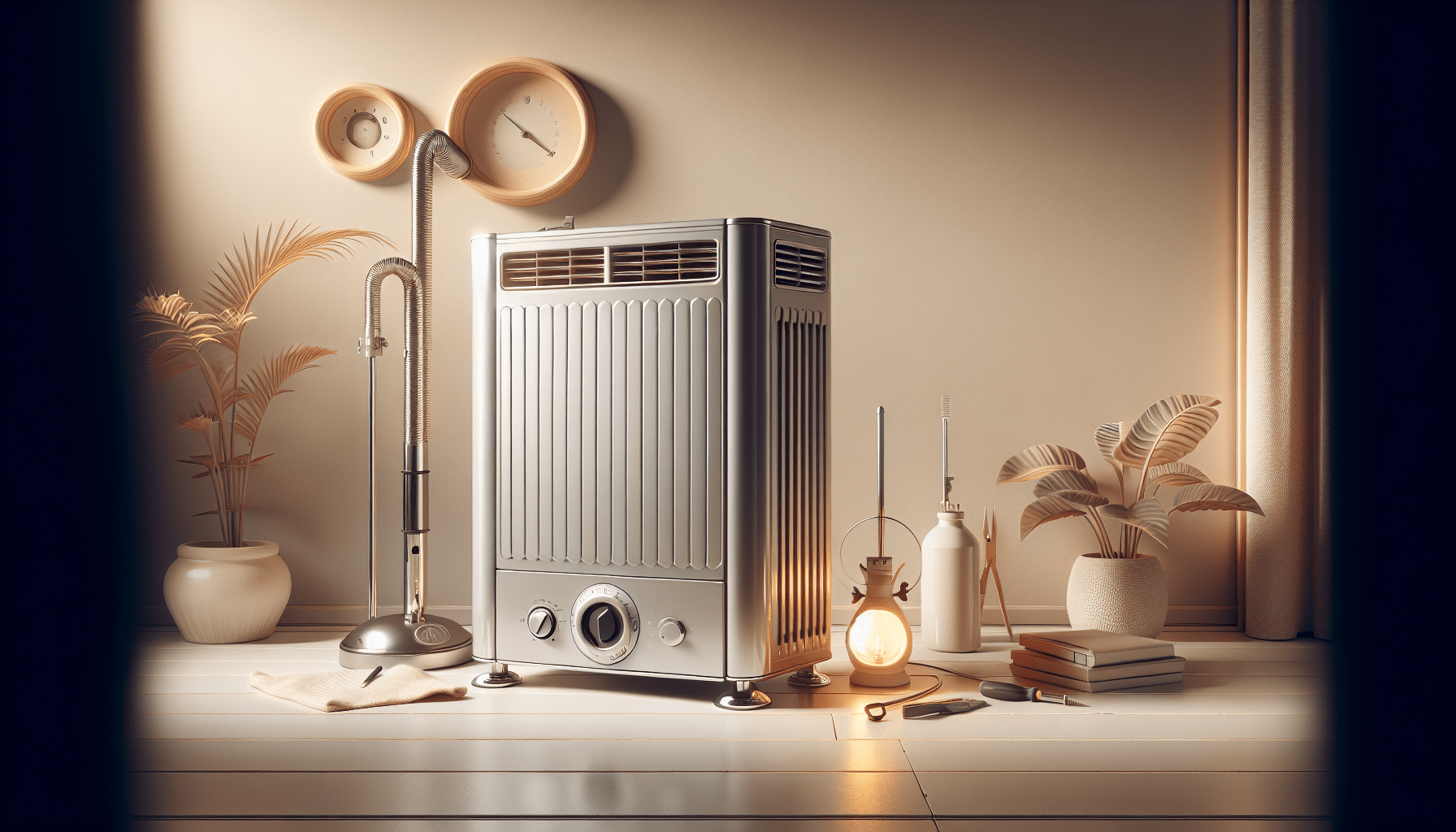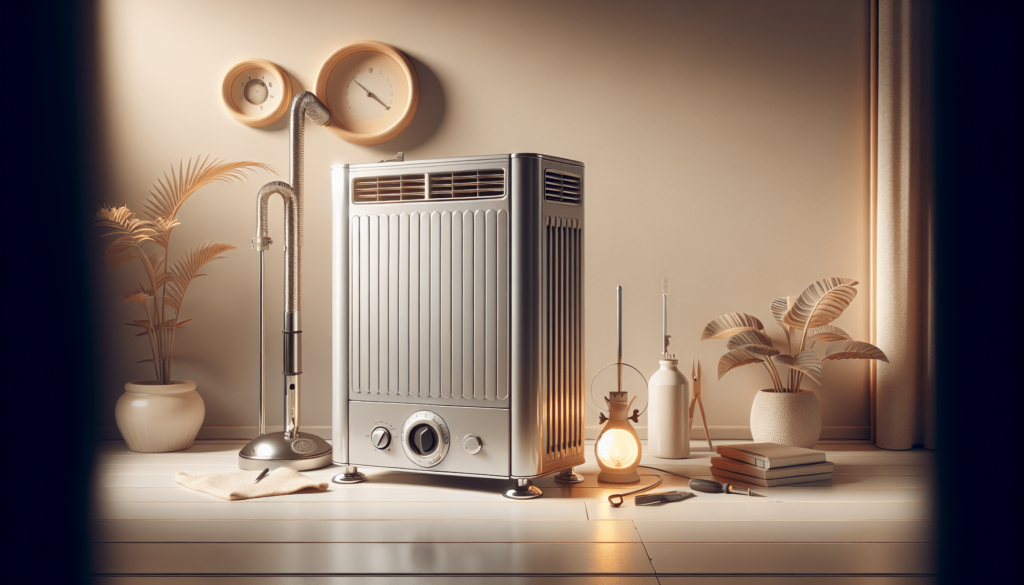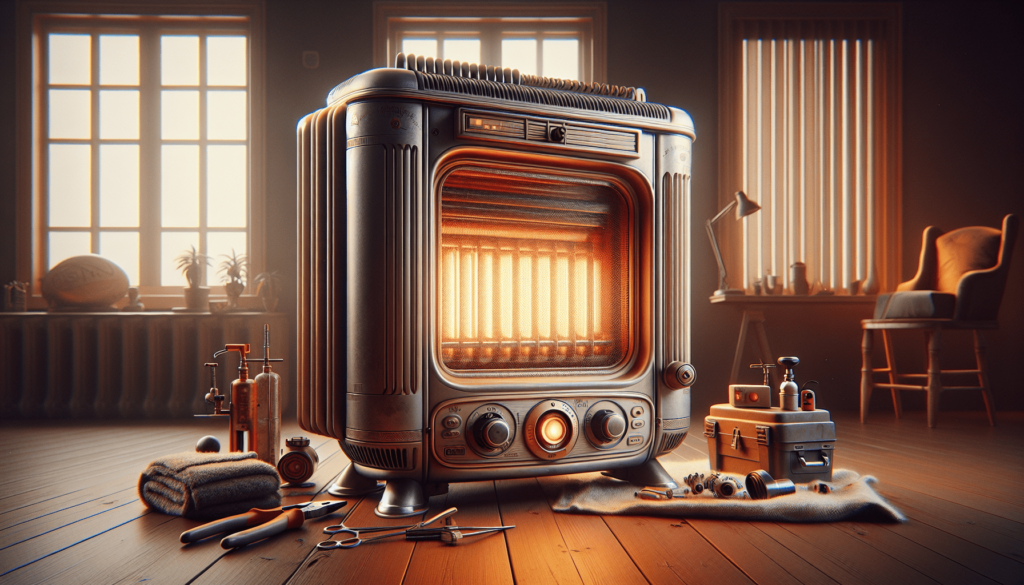
Are you looking to keep your oil burning heater running efficiently and safely? Ensuring your heater is well-maintained can save you money, provide consistent warmth, and prolong the life of your equipment. In this comprehensive guide, you’ll discover essential maintenance tips for your oil burning heater that are straightforward and effective.

Understanding Your Oil Burning Heater
Before diving into the maintenance tips, it’s helpful to have a basic understanding of how your oil burning heater operates. Knowing how it works can help you identify potential issues early and perform routine maintenance more effectively.
Components of an Oil Burning Heater
Your oil burning heater consists of several key components that work together to provide warmth. These include the oil tank, burner, heat exchanger, and controls. Each part plays a crucial role and requires regular attention.
- Oil Tank: Stores the heating oil used by the burner.
- Burner: Mixes oil and air to create a flame that heats the air or water.
- Heat Exchanger: Transfers the heat from the burning oil to the air or water that circulates through your home.
- Controls: Regulate the heater’s operation, including the thermostat and safety mechanisms.
How It Works
When your thermostat signals that heat is needed, the oil burner draws fuel from the tank, mixes it with air, and ignites the fuel-air mixture. The resulting flame heats the heat exchanger, which in turn warms the air or water that is distributed throughout your home.
Regular Maintenance Tasks
Routine maintenance is key to keeping your oil burning heater in top condition. By performing these tasks regularly, you can prevent common issues and ensure that your heater runs efficiently.
Checking and Changing the Oil Filter
Your oil burning heater’s filter is responsible for removing impurities from the oil before it reaches the burner. A clogged filter can reduce efficiency and cause the burner to malfunction.
- When to Check: Ideally, check the oil filter every three months.
- When to Change: Replace the filter at least once a year.
Steps to Change the Oil Filter:
- Turn off the heater and wait for it to cool.
- Locate the oil filter, usually situated near the oil tank.
- Place a container under the filter to catch any spills.
- Remove the old filter by unscrewing it.
- Install the new filter, ensuring it is securely in place.
- Turn the heater back on and check for any leaks.
Cleaning the Burner
The burner is the heart of your oil burning heater. Keeping it clean ensures efficient operation and prevents soot buildup.
- When to Clean: Clean the burner annually.
Steps to Clean the Burner:
- Turn off the heater and disconnect the power supply.
- Remove the burner assembly carefully.
- Use a soft brush to clean the combustion chamber and burner nozzle.
- Check for any signs of wear and tear, replacing parts if necessary.
- Reassemble the burner and reconnect the power.
Checking the Heat Exchanger
The heat exchanger transfers heat from the burning fuel to the air or water. A clean heat exchanger improves efficiency and reduces the risk of carbon monoxide leaks.
- When to Check: Annually, during the heater’s general inspection.
Steps to Inspect the Heat Exchanger:
- Turn off the heater.
- Access the heat exchanger following the manufacturer’s instructions.
- Inspect for cracks, corrosion, or soot buildup.
- Clean the heat exchanger using a soft brush if soot is present.
- Contact a professional if you find any structural damage.

Seasonal Maintenance Tasks
In addition to routine tasks, certain maintenance activities are best performed at the beginning of each heating season. This ensures that your heater is ready to perform when you need it most.
Inspecting the Flue and Chimney
A clear and clean flue and chimney are essential for the safe operation of your oil burning heater. Blockages can cause dangerous gases, such as carbon monoxide, to back up into your home.
- When to Inspect: At the start of the heating season.
Steps to Inspect the Flue and Chimney:
- Turn off the heater.
- Check the flue pipe for any blockages, such as nests or debris.
- Inspect the chimney for signs of damage or blockages.
- Clean or replace components as needed.
- Consider hiring a professional chimney sweep for thorough cleaning.
Testing Safety Controls
Safety controls, including the thermostat, limit controls, and safety shutoff, ensure that your heater operates safely.
- When to Test: Annually, before the heating season begins.
Steps to Test Safety Controls:
- Check the thermostat by setting it to a higher temperature and ensuring the heater activates and deactivates correctly.
- Test limit controls by simulating high-temperature conditions to ensure they shut off the burner as intended.
- Inspect the safety shutoff mechanism to ensure it halts the heater in case of malfunction.
Checking Oil Supply Levels
Running out of heating oil can damage your burner and leave you without heat. Regularly monitoring your oil levels helps you avoid interruptions.
- When to Check: Monthly, or more frequently during peak usage periods.
Steps to Check Oil Supply Levels:
- Open the oil tank’s gauge or use a dipstick to measure the oil level.
- Schedule deliveries based on your usage patterns and tank capacity.
- Keep a record of oil usage to monitor for any sudden increases, which could indicate a leak.
Preventive Maintenance Tips
Preventive maintenance goes a long way in extending the life of your oil burning heater and ensuring its safe operation. These tips can help you catch potential issues before they become serious problems.
Scheduling Annual Professional Inspections
While there are many maintenance tasks you can perform yourself, a professional inspection provides a comprehensive checkup of your heater.
Benefits of Professional Inspection:
- Detection of hidden issues.
- Thorough cleaning that may be difficult to perform yourself.
- Peace of mind that your heater is safe and running efficiently.
Using High-Quality Fuel
The quality of your heating oil can significantly affect the performance of your heater. Poor-quality fuel can lead to clogs and increased wear on your heater.
Tips for Choosing High-Quality Fuel:
- Purchase oil from reputable suppliers.
- Avoid fuel that is discolored or has a foul odor.
- Discuss fuel additives with your supplier to improve performance and reduce deposits.
Keeping the Area Around the Heater Clear
Maintaining a clear space around your oil burning heater reduces fire hazards and allows for better airflow.
How to Maintain Clear Space:
- Keep at least three feet of clearance around the heater.
- Store flammable materials away from the heater.
- Regularly remove dust and debris from the area.
Troubleshooting Common Issues
Despite your best efforts, problems can still arise with your oil burning heater. Understanding common issues and their solutions can help you respond quickly and effectively.
Heater Not Igniting
If your heater fails to ignite, it could be due to several reasons, including issues with the fuel supply, ignition system, or controls.
Possible Causes and Solutions:
- Empty Oil Tank: Check and refill the tank.
- Clogged Nozzle or Filter: Clean or replace the filter and nozzle.
- Faulty Ignition: Inspect the spark electrode and replace if necessary.
Uneven Heating
If your home is not being heated evenly, the issue could be related to airflow or the distribution system.
Possible Causes and Solutions:
- Blocked Vents: Ensure all vents and registers are open and clear of obstructions.
- Dirty Air Filter: Clean or replace the air filter in your distribution system.
- Imbalanced Ductwork: Consult a professional to check for issues in the duct system.
Soot and Smoke Emission
Excessive soot or smoke can indicate incomplete combustion or ventilation issues.
Possible Causes and Solutions:
- Dirty Burner: Clean the burner to ensure proper combustion.
- Blocked Chimney or Flue: Inspect and clean the flue and chimney.
- Incorrect Air-Fuel Mix: Adjust the air settings on your burner.
Strange Noises
Unusual noises, such as banging or rumbling, can indicate mechanical issues or air in the oil line.
Possible Causes and Solutions:
- Air in the Oil Line: Bleed the oil line to remove air bubbles.
- Loose Components: Inspect and tighten any loose parts.
- Burner Issues: Clean or replace parts of the burner as necessary.
Safety Considerations
Maintaining an oil burning heater involves more than just keeping it running smoothly; safety is paramount. These safety tips can help protect your home and loved ones.
Install Carbon Monoxide Detectors
Carbon monoxide (CO) is a colorless, odorless gas that can be deadly. Since oil burning heaters can produce CO, installing detectors throughout your home is essential.
Placement Tips:
- Install detectors on every level of your home, especially near sleeping areas.
- Test detectors monthly and replace batteries regularly.
- Follow the manufacturer’s guidelines for installation and maintenance.
Keep a Fire Extinguisher Nearby
In case of an emergency, having a fire extinguisher accessible can prevent a small fire from becoming a disaster.
Fire Extinguisher Tips:
- Place a multipurpose fire extinguisher near the heater.
- Ensure everyone in the household knows how to use it.
- Check the extinguisher regularly to ensure it is operational.
Adhere to Manufacturer’s Guidelines
Always follow the manufacturer’s instructions for maintenance and operation. These guidelines are designed to keep your heater running efficiently and safely.
Why Follow Manufacturer’s Guidelines:
- Specific maintenance schedules.
- Proper cleaning techniques.
- Safe operating procedures.
Educate Your Household
Make sure everyone in your household understands basic heater maintenance and safety procedures. This collective knowledge can prevent accidents and ensure everyone knows what to do in case of an issue.
What to Educate About:
- How to recognize signs of malfunction.
- The location and use of emergency shutoff switches.
- Contact information for professional services.
Emergency Procedures
Prepare for potential emergencies by knowing what steps to take if something goes wrong with your oil burning heater.
Emergency Steps:
- Power Off: Immediately turn off the heater and disconnect the power.
- Ventilation: Open windows to ventilate the area if CO or smoke is detected.
- Evacuate: Leave the house if you suspect a carbon monoxide leak.
- Call for Help: Contact emergency services and a professional technician.
Extending the Life of Your Heater
With proper care and maintenance, you can significantly extend the life of your oil burning heater, saving money and ensuring a warm home for years to come.
Regular Service Agreements
Many HVAC companies offer service agreements, which can provide regular maintenance checks and priority service in case of emergencies.
Benefits of Service Agreements:
- Scheduled maintenance visits.
- Discounts on repairs and parts.
- Priority emergency service.
Upgrading Components
As your heater ages, consider upgrading certain components to improve efficiency and reliability.
Components to Upgrade:
- Thermostat: Modern, programmable thermostats offer better control and efficiency.
- Burner: High-efficiency burners can reduce fuel consumption and emissions.
- Heat Exchanger: Upgraded heat exchangers improve heat transfer and efficiency.
Proper Shutdown Procedures
At the end of the heating season, shutting down your heater properly can prevent damage and make startup easier next season.
Shutdown Tips:
- Turn off the heater and let it cool.
- Clean the unit thoroughly.
- Shut off the oil supply valve.
- Cover the unit to protect it from dust and debris.
Off-Season Checks
Even during the off-season, occasional checks can help maintain your heater’s condition.
Off-Season Tips:
- Inspect for signs of rust or corrosion.
- Check oil levels and schedule deliveries as needed.
- Perform a quick startup to ensure it runs smoothly.
Recap and Conclusion
Maintaining your oil burning heater involves regular and seasonal tasks, preventive measures, safety considerations, and occasional troubleshooting. By following these tips, you can ensure your heater operates efficiently, safely, and reliably throughout its lifespan. Regular professional inspections, high-quality fuel, and keeping the area around your heater clear are just a few ways to keep it in top shape. Additionally, understanding common issues and how to address them, as well as being prepared for emergencies, can give you peace of mind and a warm home during the cold months.
When you take the time to care for your oil burning heater, you not only save money on repairs and fuel costs but also extend the life of your equipment. Here’s to a warm, safe, and efficient heating season!
